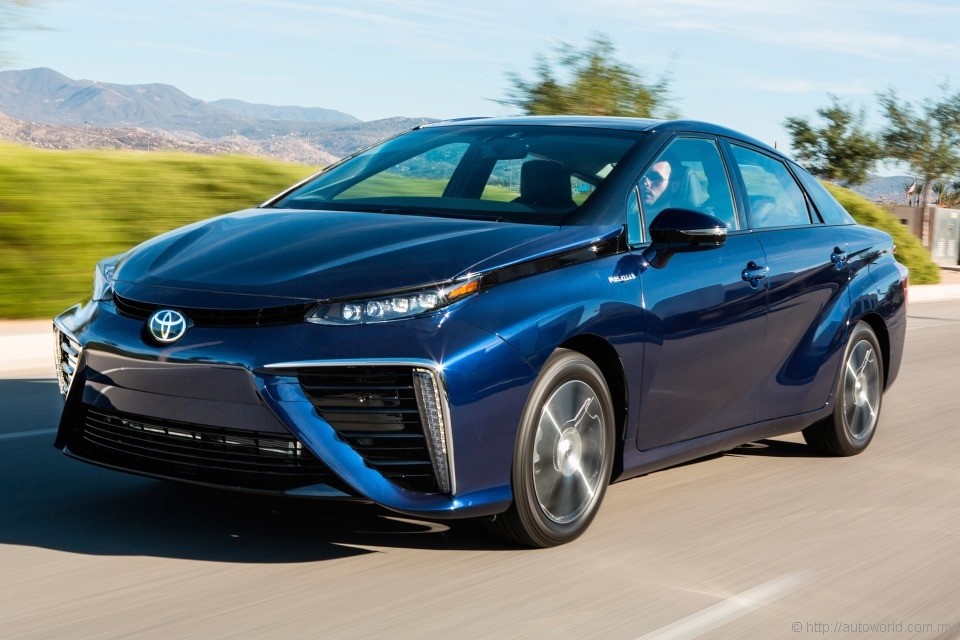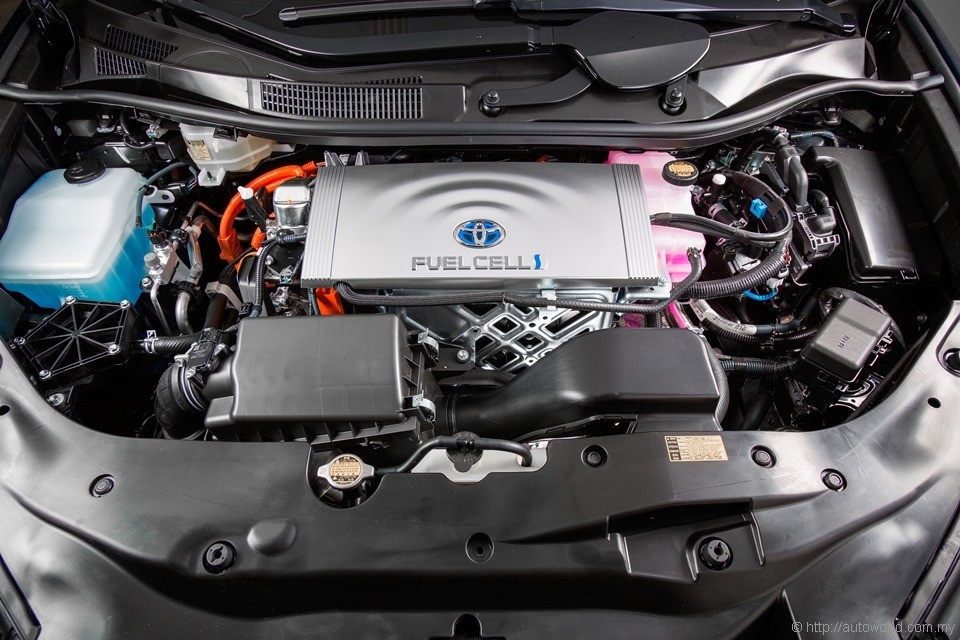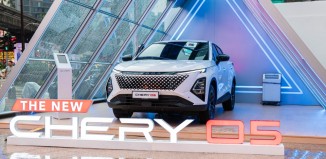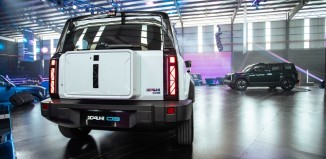Toyota Mirai – World debut of new fuel cell vehicle
Electric battery-powered vehicles, whilst noble concepts in not emitting harmful gases from their exhaust, remain hugely impractical modes of long range transport due to their lengthy recharge cycles. Experts have always believed that fuel cell is the more viable long term solution to replace internal combustion engines, and Toyota has taken a big step in that direction by unveiling one that is ready to go on sale.
The all-new Toyota Mirai hydrogen fuel-cell sedan makes its global debut today and it will go on sale in Japan next month followed Europe and the United States next year. The name Mirai is derived from the Japanese word meaning ‘future’ and what this vehicle offers is comparable driving range and performance to regular internal combustion engines whilst emitting no pollutants whatsoever.
A concept version of the Mirai, then known more generically as the FCV Concept, was first shown to global audiences at last year’s Tokyo Motor Show. Much like the Prius hybrid vehicle, the Mirai sports easily recognizable styling, notably its gaping lower grilles that draw air into the fuel cell system.
Proportion-wise, however, the Mirai’s dimensions correspond closely to regular D-segment sedans, measuring 4,890mm long by 1,815mm wide; Toyota’s own Camry, in comparison, measures 4,825mm by 1,820mm. The Mirai also has a longer wheelbase than the Camry, measuring 2,780mm versus 2,775mm. This certainly is no small car.
Under its sheet metal, the Mirai utilizes Toyota’s in-house developed fuel cell system as the source of its propulsion. The system generates electricity from a chemical reaction involving compressed hydrogen and oxygen from air with water as a harmless byproduct. In the vehicle, hydrogen is stored in a pair of specially-made heavy duty tanks at 70MPa pressure – Toyota claims that the two tanks can be fully replenished in about three minutes, which is no longer than the time it takes to refuel a regular combustion engine vehicle.
Actual generation of electricity takes place in the fuel cell stacks, which in the Mirai’s case, has a maximum output of 114kW. Compared to Toyota’s previous fuel-cell system, which was found in the limited-lease FCHV-adv, the Mirai’s fuel cells boast 2.2 times the power density, generating 3.1kW per litre of cell volume. Improved control of water circulation within the system has also obviated the need for a humidifier in the Mirai.
Electricity generated from the fuel cell system then goes to charge a nickel-metal hydride battery which in turn supplies power to an AC synchronous electric motor. Toyota has yet to release official performance data, but expect respectable top speed and 0-100 times with 154hp and 335Nm on tap from the motor.
Pictures: Official Toyota release.

























